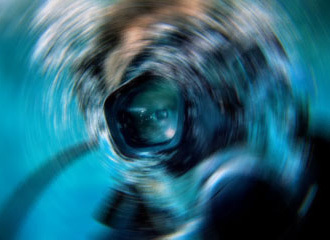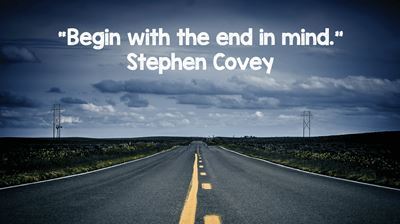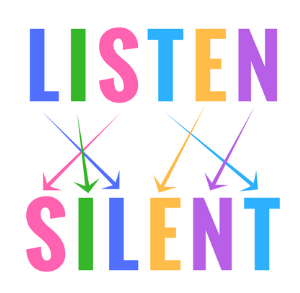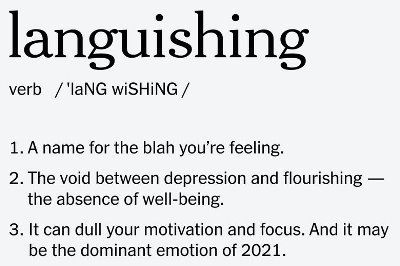Jeremie Averous's Blog, page 10
August 24, 2021
How Many Unicorn Founders are Actually Repeat-Entrepreneurs
We discover in this interesting post ‘The Founders of Clubhouse, Spotify, Stripe, and 42% of Unicorns Have One Thing in Common‘ that most highly successful entrepreneurs are actually serial entrepreneurs.

It shows that unicorn founders are quite likely to be founders with a history of small scale success and having exited from previous ventures.
“Among the founders of billion-dollar startups, almost 60% were not first-time founders. In a randomly selected group of startups that had raised a minimum of $3 million in venture capital funding but didn’t reach unicorn status — the typical picture for a seed-funded startup — about 40% were not first-time founders. The statistic shows that repeat founders were more likely to start a billion-dollar company.”
Thus, “It turns out that the best preparation for starting a wildly successful company is founding a startup. If you have never started a company, the best preparation for doing so is to start something, maybe a club, a side hustle, or simply selling something online.”
From those considerations we can infer interesting observations for the business angel that I am: repeat entrepreneurs with a history of growing and selling their startups are interesting candidates for investment. I am aware that this statement reverses in terms of causality the simple observation of the paper, but at the same it demonstrates the possibility of overcoming an emotional attachment to a venture, as well as experience through the entire lifecycle of a startup, and hence this inspires greater confidence in the new project.
The post How Many Unicorn Founders are Actually Repeat-Entrepreneurs first appeared on The Fourth Revolution Blog.
August 21, 2021
How to Visualize Trance Experiences through Narcosis Visions
Following up on the previous post ‘How Apnea Diving Leads to a Form of Trance‘ as well as our series on trance (see ‘What Does Trance Feel Like?‘ which contains reference to the series of posts on this subject), a leading French apneist provides an interesting visualization of the kind of visions he experiences in a short film ‘Narcose’ (narcosis).

Those visions give an idea of what some people may experience in certain trance states. Those visions are always very personal and not all trances lead to visions. However it is a short insight into this type of experience that is interestingly shared in this film. The director, the wife of the professional apneist, is also a practitioner of that sport, which may have helped produce a film closer to the experience.
Here is the Youtube link to watch the film: https://www.youtube.com/watch?v=ldgxr...
Hat-tip to Laurent Coulon for the discussion on apnea diving and trance.
The post How to Visualize Trance Experiences through Narcosis Visions first appeared on The Fourth Revolution Blog.
August 19, 2021
How Apnea Diving Leads to a Form of Trance
Following up on our series on trance (see the post ‘What Does Trance Feel Like?‘ which contains reference to the series of posts on this subject), one interesting practice that appears to be quite similar is what happens when one does apnea diving (also called freediving), because it requires brain adaptations.

Efficient apnea diving requires careful management of oxygen; the brain being the main oxygen consumer even basic apnea management requires to learn how to deplete the oxygen flow to the brain, and in particular the frontal cortex. This practice will significantly increase the time before breathing becomes absolutely necessary.
At the same time, this brain exercise necessarily leads to an alternate form of consciousness. Therefore, apneists are quickly in a form of trance state, focused on their performance of avoiding the urge to breathe again. Hypoxia then leads also to all sorts of visions and possibly dangerous behaviors.
Hat-tip to Laurent Coulon for the discussion on apnea diving and trance.
The post How Apnea Diving Leads to a Form of Trance first appeared on The Fourth Revolution Blog.
August 17, 2021
How We Need to Be Able to End Things Gracefully
In this post ‘Ending it gracefully‘, Seth Godin reminds us how it is important to anticipate that most initiatives will end and probably “fail” at some stage. And it is typically at those moments that we need to be able to remain graceful.

“You can pull out every stop, fight every step of the way, mortgage your house and your reputation–and still fail. Or, perhaps, you can quit in a huff at the first feeling of frustration. The best path is clearly somewhere between the two. And yet, too often, we leave this choice unexamined. Deciding how and when to quit before you begin is far easier and more effective than making ad hoc decisions under pressure.”
However, more importantly I believe is the capacity to be grateful to what happened before the end, and be graceful to all of those that have supported and participated to the adventure. The worst is when the end is the start of a long-winded drama.
Most initiatives we take will end eventually, and not always in the best of situations. Let’s learn the skill of ending gracefully and moving on.
The post How We Need to Be Able to End Things Gracefully first appeared on The Fourth Revolution Blog.
August 14, 2021
How Silent and Listen Go Hand in Hand
I just realized by reading the post ‘Listening Skills Need Exercise‘ that ‘Silent’ is the anagram of ‘Listen’ in English. This is actually quite a powerful statement.

I am a great believer in the power of active listening. And this requires an absolute openness.
“Only when we’re able to quiet what is going on in our head we can truly listen.” Active listening is powerful as a change agent, and it requires a discipline and a practice from the listener.
Silence can be more full and powerful than noise, in particular obviously than random noise.
Inner and outer silence is the key to real listening and change.
The post How Silent and Listen Go Hand in Hand first appeared on The Fourth Revolution Blog.
July 24, 2021
How Languishing is the Dominating Emotion of the Covid Times
In this excellent New York Times column ‘There’s a Name for the Blah You’re Feeling: It’s Called Languishing‘ the author makes the point that languishing may be the dominating emotion of the Covid times.

As we increasingly don’t get excited by anything as we are confined in our homes, “it wasn’t burnout — we still had energy. It wasn’t depression — we didn’t feel hopeless. We just felt somewhat joyless and aimless. It turns out there’s a name for that: languishing. Languishing is a sense of stagnation and emptiness. It feels as if you’re muddling through your days, looking at your life through a foggy windshield. And it might be the dominant emotion of 2021.”
And indeed personally I have been caught by languishing in particular during the toughest periods of confinement, not coming out of my home offices weeks at a time.
Languishing seems to be a precursor of more serious disorders in the future according to some studies, hence the need to overcome this state. The article proposes that “flow” could be the antidote. “People who became more immersed in their projects managed to avoid languishing and maintained their prepandemic happiness.” This, of course, requires that one has a project that keeps occupied. Another approach is to ensure to keep uninterrupted time to oneself, which allows to concentrate on something of interest.
Languishing seems to be quite the descriptor of the mood of many people at this moment. As vaccination increases and we are able to have more and more social relationships, we need to be able to escape this mind state. What are you doing against languishing?
The post How Languishing is the Dominating Emotion of the Covid Times first appeared on The Fourth Revolution Blog.
July 22, 2021
How We Get Closer to Having a Second Virtual World
In this post ‘Epic Games Raised $1 Billion to Fund Its Vision for Building the Metaverse’ I discovered that some companies are actively moving into creating that virtual second world of Ready Player One fame. Epic Games is one of the largest companies in the field of video games.

“In the context of Epic Games’ announcement, the metaverse will be not just a virtual world, but the virtual world—a digitized version of life where anyone can exist as an avatar or digital human and interact with others. It will be active even when people aren’t logged into it, and would link all previously-existing virtual worlds, like an internet for virtual reality.”
“The technology needed to build the metaverse is already available.” And many companies are heavily investing in virtual reality.
The article comes with a world of caution: like in the book and movie, we may be tempted to escape the real world into the Metaverse, and there will definitely be a challenge to find the right balance between virtual and real life.
Anyway, high quality virtual worlds are coming faster than we realize, and this will be a substantial disruption in our daily life.
The post How We Get Closer to Having a Second Virtual World first appeared on The Fourth Revolution Blog.
July 20, 2021
How The Origin of Wealth Has Changed in the Last Decades
In this interesting post ‘How People Get Rich Now‘ by Paul Graham, he makes the point that the origin of the fortune of the richest people has changed dramatically since the 1980s. Heirs and oil fortunes have been significantly displaced by entrepreneurs and financiers. I believe it is due to the shift to a new Age, the Collaborative Age.

“In 1982, 84% of the richest 100 people got rich by inheritance, extracting natural resources, or doing real estate deals.” “In 1982 the most common source of wealth was inheritance. Of the 100 richest people, 60 inherited from an ancestor. There were 10 du Pont heirs alone.” Today, “Roughly 3/4 [got rich] by starting companies and 1/4 by investing“. This makes a huge difference.
Looking at it with an even wider historical perspective one “1892 looks even more like today. Hugh Rockoff found that “many of the richest … gained their initial edge from the new technology of mass production.” That was a time of intense entrepreneurship with the Industrial Revolution, when railroads and factories were built generating huge changes.
It is where I beg to differ from Paul Graham interpretation about the future. It seems to me that the situation in the 1980s was due to a mature Industrial Age, driven by large corporations that exerted scale effects on mature technologies of the Industrial Age. With the technological revolution, we enter a new Age, the Collaborative Age, and like in the 1880s many new companies are blossoming up and new wealth is created accordingly. But in a few decades we may be in another mature Collaborative Age and maybe the richest people will remain the heirs to the Apple, Amazon and Facebook founders.
Nevertheless the statistics shared by Paul Graham show that we are in a period of Opportunity where value is created from new technology, upending the more traditional wealth ranking.
The post How The Origin of Wealth Has Changed in the Last Decades first appeared on The Fourth Revolution Blog.
July 17, 2021
How a New Economic Paradigm Emerges in the USA
The first days of the Biden presidency has raised a few eyebrows with some sweeping changes in the economic field. In this interesting article ‘Bidenomics, explained‘ an analysis is proposed around “creating a two-track economy – a dynamic, internationally competitive innovation sector, and a domestically focused engine of mass employment and distributed prosperity“.

In any case, all commentators agree that the Biden economic approach is singularly different from the liberal and deregulating approach applied since Reagan. A number of measures include funding family and child care, minimum wage substantial increase, and building and upgrading national infrastructure. This leads to supporting and developing a very national, non exportable economy, generating high level of employment while at the same time supporting a smaller export-orientated economy based on technology and knowledge.
The point being that “this [high technology] sector will generate a lot of productivity and a lot of export revenue, it is not going to employ most Americans. Instead, most Americans will work in less competitive, domestically focused sectors — selling houses to each other, pulling each other’s wisdom teeth, preparing each other’s food, bagging each other’s groceries, taking care of each other in their old age. That vast domestic sector will distribute the income generated by the highly competitive knowledge sectors“
It will be quite interesting to watch how this approach unfolds and whether a new equilibrium can be reached in terms of economic redistribution. In any case it is quite a logical approach to try to address major current issues in terms of globalization impact and increase of inequality.
The post How a New Economic Paradigm Emerges in the USA first appeared on The Fourth Revolution Blog.
July 10, 2021
What Does Trance Feel Like?
To finish this series of posts about my exploration of trance, I am sure you all ask yourselves how it is like to be in trance. It’s difficult to describe, I’ll still give it a try.

Basically getting in a trance state is getting the habit of inhibiting our higher cognitive functions to allow subconscious processes to express themselves, through gestures and movement as well as noises. Visions appear including colors and sometimes impersonation of animals or things.
The amazing part is that one remains very much conscious during the experience, self-observing what happens and in a certain capability to recount the experience (although like a dream, memories tend to dissipate after a while).
It is not infrequent to produce sounds or perform movements that one would be quite unable to produce in a normal state (remember that trance increases strength and diminishes pain).
An important parameter is also that trance is quite a contagious state: during the training with 20-ish trainees and 5 or 6 experienced trance practitioners, the departure of a critical number of people in the trance state had almost an instant effect on the rest of the group.
Trance is quite an enjoyable state and in a way, is a method for self-healing emotional and physical conditions. In that matter, the power within can sometimes be extremely impressive.
As I am practicing and it will take weeks to increase my understanding of trance, I give you all an appointment in a few months’ time to learn more about trance, and possibly my adventures as part of the associated scientific experiments!
I hope you enjoyed this series of post on my personal journey into an altered state of consciousness – cognitive trance – that I was privileged to undertake this year. I will recount from time to time my experiences around trance. Stay tuned!
Previous posts in this series:
A Journey Into Altered States of Consciousness: Introduction How Trance Is a Common Altered State of Consciousness How Trance Is Common Around Us But We Don’t Realize It How Trance Is Associated with Pain Decrease and Strength Increase How ‘Flow’ May Assimilated to a Trance State How I Was Taught to Self-Induce Trance At Will After Only a Few Hours How My Teacher Corine Sombrun Discovered Trance Practice How Shamanistic Trance Inducers Are Quite Ineffective How Trance Has Become a Scientific Experiment The post What Does Trance Feel Like? first appeared on The Fourth Revolution Blog.



